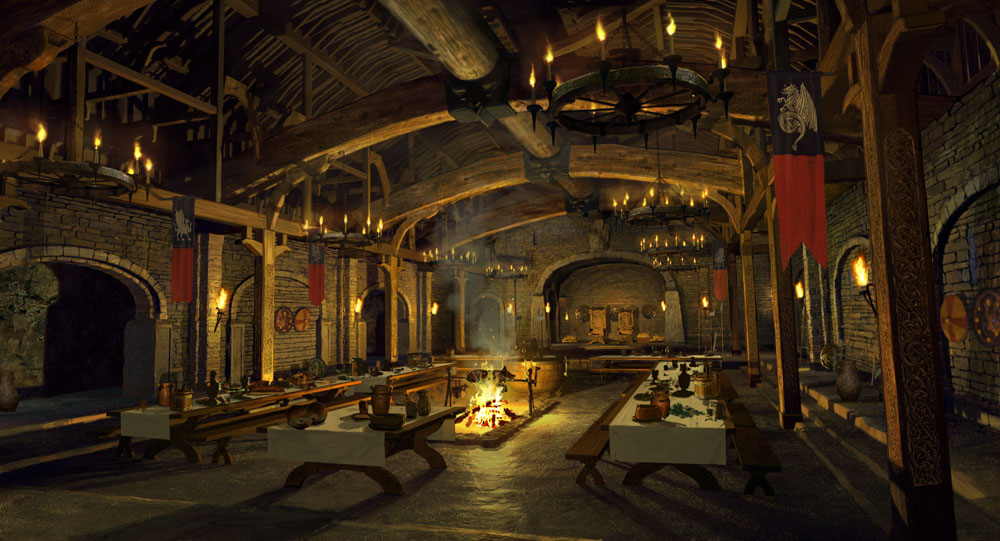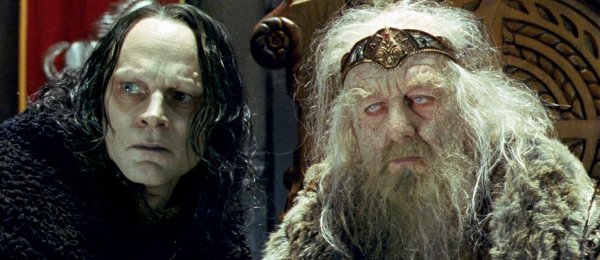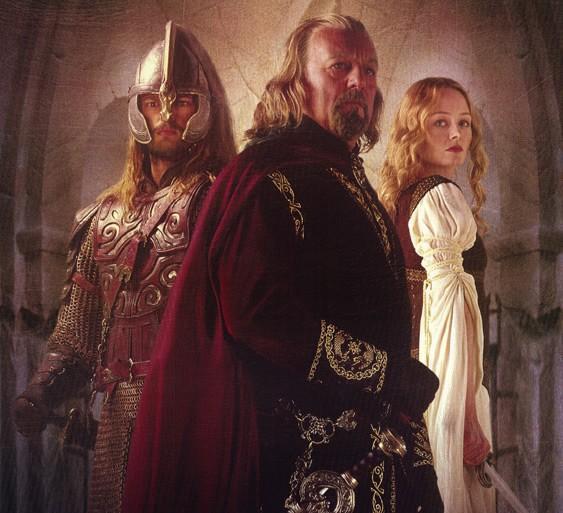One of the areas where I feel the connection is most evident is in The Two Towers, and the disintegration of the Golden Hall of Meduseld, under the rule of King Théoden of Rohan. The arrival of Gandalf and his comrades at Edoras closely echoes the arrival of Beowulf at Heorot, King Hrothgar's hall.
The Hall played a significant role in Anglo-Saxon culture, often perceived as a metaphor for the prosperity and agricultural viability of the land. In Beowulf, the land is plagued by the monster Grendel, and similarly the hall was abandoned and fell into disuse.
The inner collapse of Rohan, caused by the aged and frail Théoden's submission to the twisted, traitorous advice of his councillor Grima 'Wormtongue', who is a servant of the corrupted wizard Saruman, is reflected by the orc-ridden land and the exile of the king's nephew Éomer and a group of loyal Rohirrim soldiers.
In both texts, the hall and subsequently the surrounding country are aided and saved by abnormally strong outsiders. Beowulf challenges the monster Grendel and emerges the victor, having slain the enemy. Similarly Gandalf confronts the opposing force by 'exorcising' Saruman's influence from Théoden's mind.
Tolkien's representation of events in Rohan were calculated to match these events in Beowulf. There are many indicators of this in the novel. The name of Théoden's hall is taken from the Old English language and translates as "mead hall". Also, the names of many of the Rohirrim are inspired by Old English. For example, Éomer translates to "horse-famous", his sister Éowyn's name means "horse-joy, while Théoden's name comes from the word þēoden meaning "leader of a people".
Another event in The Lord of the Rings that bears a resemblance to the story of Beowulf is Gandalf's defeat of the Balrog in the mines of Moria. Throughout the description of the epic battle, the Balrog remains nameless. Likewise, Beowulf attacks Grendel's mother, who is not given a name.
Gandalf and the Balrog fall from the bridge into a subterranean lake beneath the mines. They fight for ten days without rest in the lake, through ancient tunnels and finally on the peak of a mountain. Gandalf kills the Balrog but dies himself from his efforts, before being returned to life "until his task was finished".
It seems to me that this episode is obviously influenced by Beowulf's fight with Grendel's mother. In order to fight the monster, Beowulf must reach her lair underneath a lake. A battle ensues and the hero is dragged by the monster to the bottom of the lake. After nine hours of fighting, Beowulf emerges victorious.
Tolkien's in-depth analysis of the Old English epic poem clearly had great influence over his writing of The Lord of the Rings. This can be seen through his use of the ancient language to form new words and names and his replication of some of the main stories composed by the Anglo-Saxons. Without the Old English language, it is apparent that The Lord of the Rings and it's related texts could not exist.










Great blog Denise. I really enjoyed the read. I love that fight scene with the Balrog and Gandalf. There is definitely something of the Heroic code in that line from the movie, "Until at last, I threw down my enemy and smote his ruin upon the mountainside".
ReplyDelete